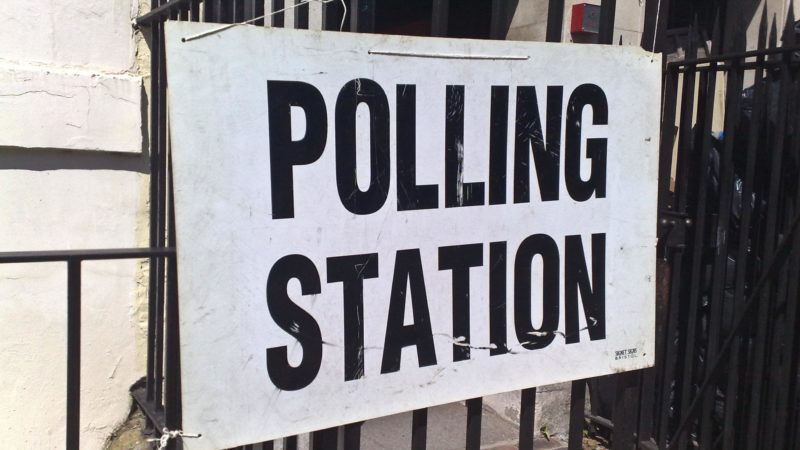Democracy Club’s network of volunteers have trawled through thousands of nomination papers for England's local elections in May. Here's what they learnt.

With thanks to Democracy Club for permission to publish this edited version of their election briefing.
Precisely 5,000 English councillors will be elected on 6 May. Of these, 4,648 will be elected in scheduled elections (2,662 rolled over from 2020), and 352 will be elected in by-elections postponed due to the coronavirus pandemic.
Of the by-elections, 95 will take place alongside a scheduled election (ie. as a double, or in one case, triple-seat election), while 257 standalone by-elections will also be held, across 251 wards in 132 councils.
The figure of 352 is the largest number of council by-elections held on a single day in modern UK political history. By way of comparison, the 2019 English local elections saw 40 by-elections.
There are a total of 19,108 candidacies across England, representing 157 political parties, as well as 1,186 independents.
However, the number of individual candidates involved will be lower than this headline fgure. This is because the 2020 and 2021 electoral years have been combined, meaning that some individuals will contest more than one seat (for example, district and county seats in the same area). Based on our initial dataset (before detailed de-duplication), we estimate that at least 1,300 individuals are standing for two seats, and at least two are standing for three.
Who’s running?
Table 1 below gives the number of seats contested by the four largest parties, as well as acombined total for minor parties and independents. The fnal column gives that fgure as a proportion of all English seats up for election.

Two points are immediately striking when compared with previous years.
The first is the strength of the Green Party. In 2018 the party contested 49% of seats, while in 2019 it fought 29%. This year it is fghting 59% of seats.
The second is the collapse of UKIP, which contested 15% of seats in 2018 and 16% in 2019. This year the party is fghting only 3%, contesting 144 seats down from 1,388 in 2019.
According to fgures kindly provided by the Co-Operative party, 690 council candidates are standing as Labour/Co-Operative.
Smaller parties
Although the number of parties overall is roughly the same as in 2019, the number of candidates standing for smaller parties is substantially up from previous years. In 2019, the largest number of seats contested by a party outside of the main parties (then including UKIP) was 44; this year it is 285.
Table 2: smaller parties contesting 15 or more seats

*OMRLP seat coverage is substantially lower than their candidate number would suggest, as the party is standing 13 candidates for a single-seat by-election in Kingston-upon-Thames.
As usual, a large number of parties are standing only a handful of candidates. Table 3 gives a summary of the number of candidates per party: 43 parties are only standing a single candidate.
Table 3: Candidates per party

Smaller party highlights
Ten parties contesting the elections were frst registered with the Electoral Commission in 2021. Of these, only the Freedom Alliance is contesting more than 10 seats.
In Liverpool, the Liberal Party (not to be confused with the Liberal Democrats) are contesting all but three seats, as well as the mayoralty.
All 15 Veterans and People’s Party candidates are standing in Hartlepool, where the party is standing more candidates than the Conservatives, despite not running a candidate in the parliamentary by-election.
Table 4 gives the council areas where other minor parties are felding the largestnumber of candidates.
Table 4: highest concentrations of minor party candidates

Uncontested seats
In 2019, we found 151 seats went uncontested in England (ie. only one candidate came forward to stand). In 2021, that number has plummeted to four.
Under-contested seats
In addition to uncontested seats, there are a small number of wards where fewer than two candidates are standing per available seat. In these contests, parties with enough candidates are guaranteed a seat regardless of the result. The majority of these are Labour wins in Halton.
Two-way contests
For voters in 189 wards, there will only be two party options on the ballot. The Conservatives feature in 182 of these, and Labour in 121. The table below provides a breakdown of these two-way contests, including areas where there are three or four candidates but only two parties running.
Table 5: Two-way contests in England

About Democracy Club
Democracy Club is a non-partisan, non-proft Community Interest Company, with a large community of volunteers supported by a small core team.
Our database is built by our volunteers, who work together to manually collect and enter data from nominations papers into our database at candidates.democracyclub.org.uk.
We believe that information about elections – relevant to the individual – should be easy to fnd. Our websites and data services provide voters with key details such as where you can vote and who will be on your ballot. During 2019 alone, our database handled in the region of 6 million postcode searches for this information.
However, we believe much of this work should be done by the government. At present, the UK state does not collect lists of polling stations, candidates, or results, and provides no centralised database for voters to fnd these. We believe that this should change.
To reach hundreds of thousands of new readers we need to grow our donor base substantially.
That's why in 2024, we are seeking to generate 150 additional regular donors to support Left Foot Forward's work.
We still need another 117 people to donate to hit the target. You can help. Donate today.



